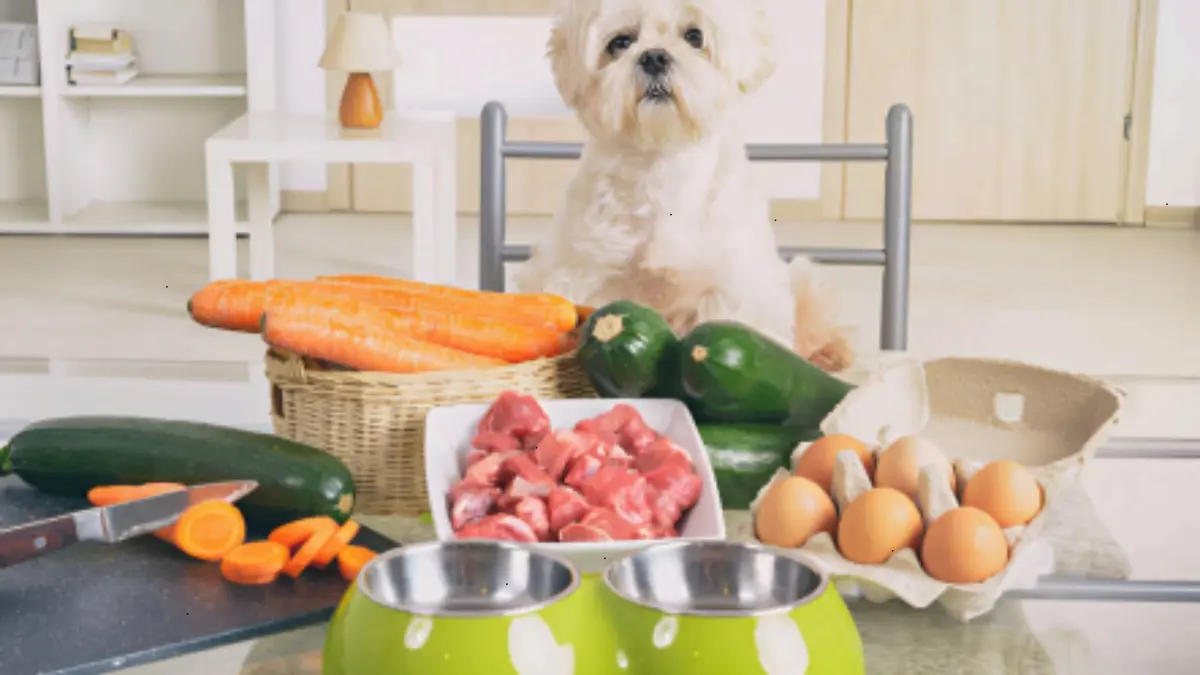Raw Dog Food Safety: How to Ensure Your Pet’s Raw Diet Is Balanced and Healthy
Learn how to safely prepare raw dog food, ensuring a balanced and healthy diet for your pet with proper nutrition and handling tips.
Switching your dog to a raw diet can have great benefits, but it also requires careful planning to ensure your pet gets the right nutrition. Many pet owners are concerned about whether raw dog food provides a balanced diet and if it’s safe for their dogs.
In this article, we’ll explore how to keep your dog’s raw diet safe, balanced, and healthy.
The Risks of an Unbalanced Raw Diet
While raw feeding has gained popularity for its health benefits, it’s important to be aware of the risks if the diet isn’t properly balanced. Dogs require specific amounts of proteins, fats, vitamins, and minerals to stay healthy. Feeding an unbalanced raw diet can lead to:
- Nutritional Deficiencies: Without the right combination of nutrients, your dog may experience issues such as poor coat health, weakened bones, or low energy.
- Digestive Problems: Improperly prepared raw meals can cause upset stomachs or more serious issues if not handled correctly.
- Bacterial Contamination: Raw meat can harbour harmful bacteria if not stored or handled properly, putting your dog at risk of infections.
- Pro Tip: Always consult a veterinarian or pet nutritionist before starting your dog on a raw diet to ensure it’s nutritionally complete.
Choosing Pre-Made Raw Dog Food vs. Homemade
Many pet owners wonder whether it’s better to make raw dog food at home or purchase pre-made raw food. While making your own gives you full control over ingredients, it’s often harder to ensure the meals are balanced.
Pre-made raw food from trusted suppliers are designed to meet your dog’s nutritional needs without the guesswork. Companies like Raw, Fed & Furry offer carefully balanced meals that are not only convenient but also formulated to support your dog’s health.
Pro Tip: Pre-made raw food ensures your pet is getting a balanced meal, while also saving you time and effort.
Key Nutrients Your Dog Needs in a Raw Diet
To maintain a healthy and balanced raw diet, it’s important to ensure your dog is getting all the essential nutrients. Here are the key components every raw dog diet should include:
- High-Quality Protein: Raw meat is the foundation of a raw diet, but it should be lean and come from trusted sources to avoid contaminants.
- Healthy Fats: Dogs need fats for energy and to maintain a healthy coat. Make sure the raw diet contains an adequate amount of fat without overdoing it.
- Bone and Cartilage: These provide important minerals like calcium and phosphorus, which are essential for bone health.
- Vegetables and Fruits: While primarily carnivores, dogs can benefit from small amounts of vegetables and fruits, which add fibre and important vitamins.
Ensuring these components are in the right proportions is key to keeping your dog’s diet balanced.
Handling and Storing Raw Food Safely
Raw food can easily become contaminated with bacteria like Salmonella or E. coli, which can be harmful to both your dog and your family. Follow these guidelines for safe handling and storage:
- Keep Raw Meat Frozen Until Use: Always store raw food in the freezer and thaw it in the refrigerator before serving.
- Wash Your Hands and Surfaces: Always wash your hands, utensils, and preparation surfaces thoroughly after handling raw food.
- Use Stainless Steel Bowls: They are easier to sanitise and reduce the risk of bacterial buildup compared to plastic bowls.
By following these safety practices, you can minimise the risk of contamination and ensure your pet’s meals are safe.
Conclusion
Raw feeding can offer a natural and nutritious option for your dog, but it requires careful planning and attention to safety. By choosing balanced, pre-made raw dog food options from trusted suppliers and handling raw food properly, you can give your dog the health benefits of a raw diet while ensuring they stay safe and healthy.


